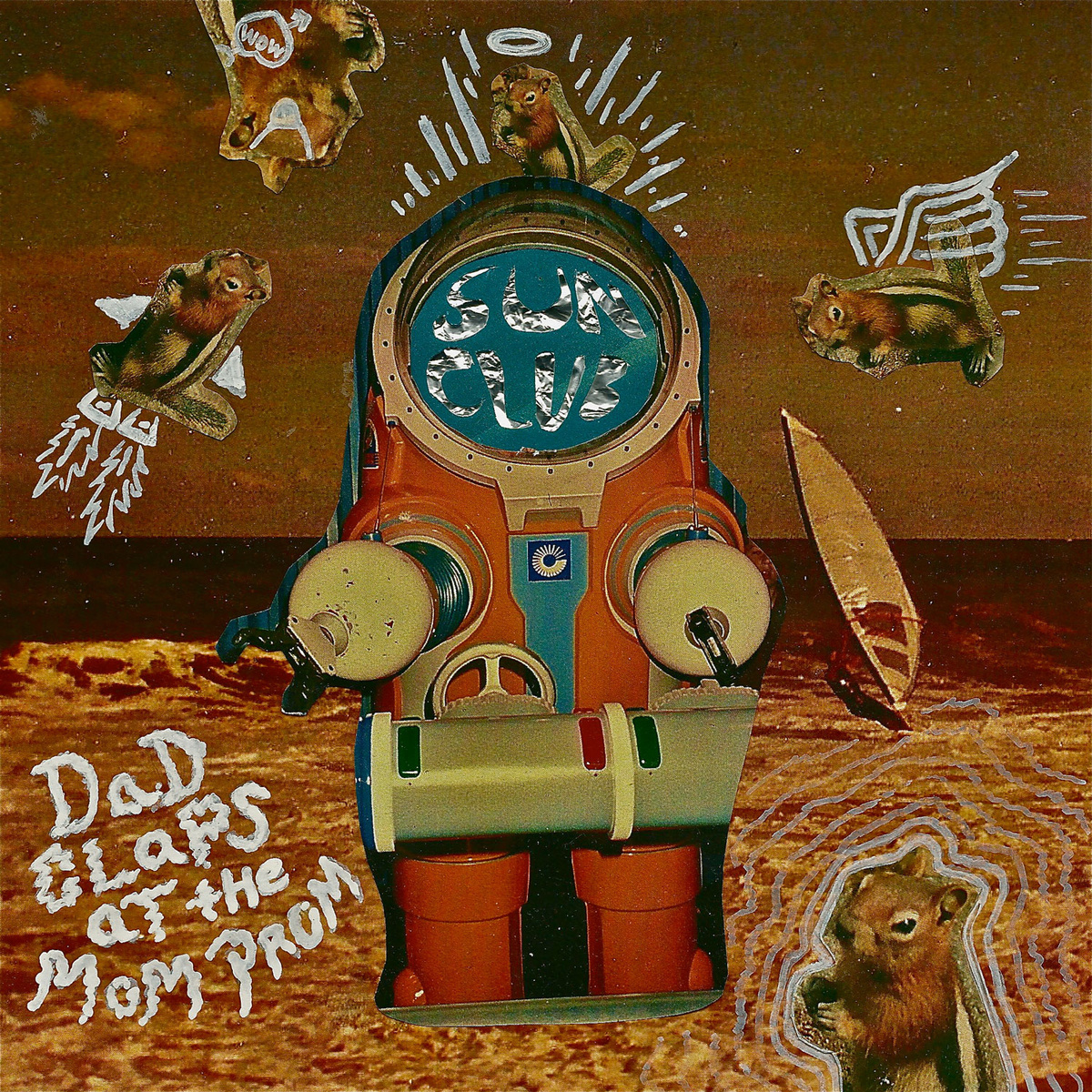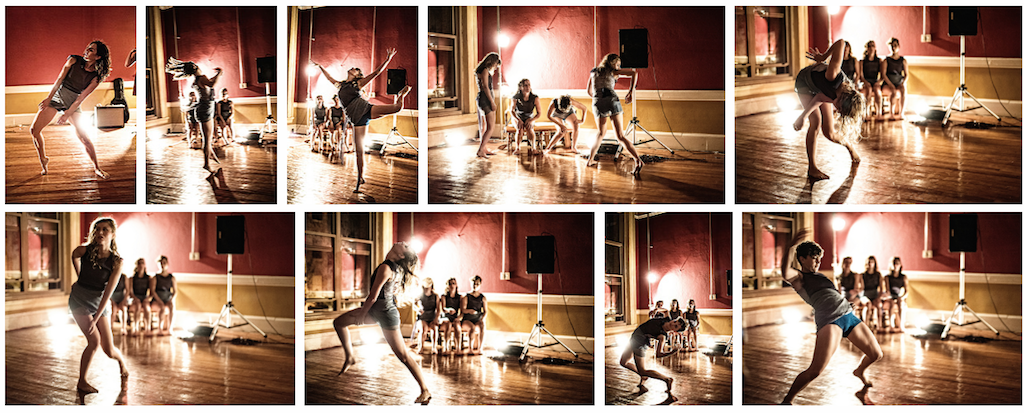Marnie Benney Interviews University of Maryland College Park Participants in the Contemporary Art Purchasing Program, also known as CAPP
Jackie Milad, Director of the University of Maryland’s (UMD) Stamp Gallery, was kind enough to meet me not only on a Saturday, but the first 60 degree Saturday we’ve had in about 5 months to talk about… work. Milad has focused her professional drive and passion into a few innovative initiatives at UMD.
One in particular is the Contemporary Art Purchasing Program (CAPP), which educates students about issues relating to contemporary art and the art market. After doing a lot of research, students are given $50,000 from the University to purchase art for Student Union’s collection.
During our two hour interview, Milad spoke candidly the CAPP program, curating and art education.
Marnie Benney: Hi Jackie! Thanks for meeting me to talk about CAPP. I’m interested in how the program started, how long its been running, and how it’s funded?
Jackie Milad: It was initiated in 2006 by the previous Director of the Student Union, Gretchen Metzelaars, and Graduate Coordinator for the Stamp Gallery, Brian Sykes, and the original coordinator Jeff Rhodes. They used a similar program at Wake Forest as a model. Since then, we have conducted the program every other year, inviting all UMD students to apply for the small Acquisition Committee. The objective is to create a public collection that not only reflects the interests and social concerns of our diverse student population, but to act as a timeline. The entire collection is on display throughout the student union, allowing for the campus community and beyond to have easy access to amazing contemporary art.
The budget in large part comes from student-approved student fees—50 cents a student per year. We are also cultivating private donors to help defray costs associated with travel and collection care.
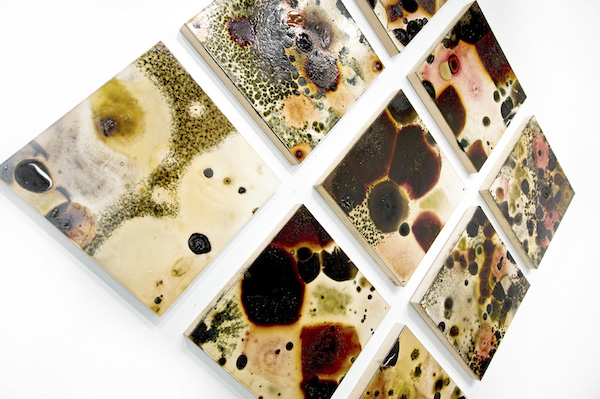
MB: How do you select students for the program?
JM: All UMD students, no matter what their field of study, are encouraged to submit an online application. From those applications, I select the new students. We’ve had students from a number of different areas of study—for example, astronomy, performing arts, engineering, and others.
The student committee spends a year learning about contemporary artists, the art market, and developing public collections. They take a 3-credit class in the art department, and I work with them as an advisor throughout the year. Ultimately, the students begin the selection process by creating a long wish list of artworks. In the spring, they visit artist studios and galleries in the Baltimore, D.C., and New York area. These visits help them to make more informed decisions and cut the list to fit within the budget. The students present their choices to a small Advisory Board made up of alumni, UMD student affairs staff, art historians, curators, and collectors. But in the end, it is the students who make the final decisions.
MB: Since the work is displayed in the student union, it’s an opportunity to bring art, art education, and appreciation to people who may not normally be an art-going crowd. I love how it’s so integrated.
JM: Yes, the artwork is always out there. Students can be doing their homework all semester under an Edward Burtynsky piece and one day look up and realize, “This is a beautiful photograph!” They get to really live with the work. It’s exciting for me when I see a professor using the work as a teaching moment— especially when I don’t recognize the professor. I know many of the teachers in the Art and Art History department; it’s an expected connection, but when I see someone I don’t know, it’s great. It makes it worth it.
MB: How many students are in the program?
JM: We select six students to be a part of the program. We are always thinking about what that structure will look like in the future. We ask, “Does it make sense? Should we do it every year?” If we receive more funding for the program, we could have more students involved and offer it more often.
Although, in some ways, having five or six students is perfect. It allows them to learn group dynamics and leadership. Learning outcomes are really important to our student affairs division. There’s something about small groups that really makes sense for this process.
And the process is a difficult one. The students may start off so passionate about a particular artist, and, yes, a piece might be great in their personal collection, but they have to ask if it is right for the university’s collection. Having your peers say, “That piece isn’t going to work” can be difficult.
MB: So they are responding to what’s appropriate for the collection?
JM: Yes, they are thinking about many factors: their budget, the vision of the works that preceded them, mediums, and diversity of the artists. They are also looking outside the gallery at the student population coming in the doors everyday and current events.
As I mentioned before, our program is based on the Wake Forest program, which is amazing. They have works dating back from the 50’s. They have a Rauschenberg! The Wake Forest collection shows this really interesting timeline. I really press the students to consider what would best represent our time.
But you know, it’s their thing. I do what I can to advise them, but I really want that all to come from them. I want them to make the decisions, but they have to justify it. They write an acquisition proposal and present to an advisory board that is made up of art professionals, art historians, and professors in the area. So they get feedback from professionals who know what’s what in the industry.
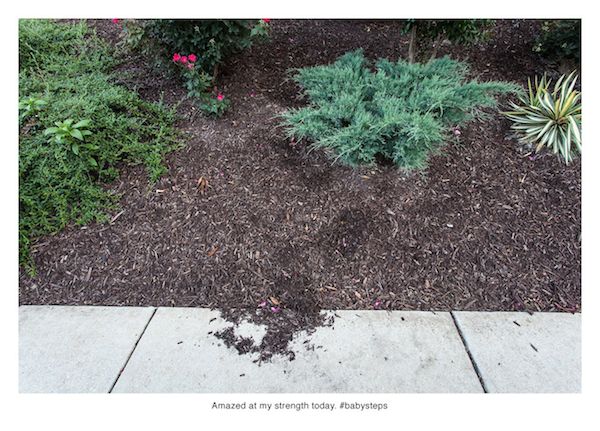
MB: Once they present and get feedback, how much time do they have to rethink their selection?
JM: The bulk of their studio visits happen during Spring Break in March. Their presentation is prior to all those trips. At the beginning of the program, they may have 200 artists they are interested in. Then, they chisel it down to about twenty artists. In the presentation to the advisory committee, they address why the artwork would suit the collection. There’s the logical questions, which I’m usually the one asking. For example: “That piece is tissue paper. Will that hold up in the Student Union?”
Then, we go on the studio visits. Often, after seeing the work in person, the students’ reaction is “Oh we have to buy this!” or the opposite. After they come back from the trips, they have about a week to boil it down again. They do their final presentation a few weeks after their trips. Again, they get feedback and they can take it or leave it. It really is their choice.
MB: How do the students compromise when deciding what art pieces they will add to the collection?
JM: We acknowledge that as a group we need to make tough decisions and commit to hearing all recommendations. As faculty, we try to be supportive. During the process, the group develops a great rapport with each other. They have their disagreements early on in the process so by the time they get to the advisory board presentations, they are better at reaching consensus. And consensus is really a life skill.
But there are still so many things that can be improved. One thing I have advocated for is the management and conservation of the collection. When the program started, they weren’t thinking long-term, they were just trying to get something on the walls in a newly renovated building.
Last year we participated in a conservation assessment program. We had an assessor take a look at the collection, how we were caring for it and give us recommendations for it.
The work is in a place with food, fumes and this idea of just leaving the art on the walls forever and not taking care of it isn’t ok. It’s not good stewardship. In the beginning there was not really a strong foundation for that. Now we have over twenty objects in the collection and next year we are going to add more.
To have a document put together by the The Heritage Preservation Society added a lot of weight, so things have started to happen. We built a storage room in the back of the gallery. We took work down to give it a rest and are restoring some work as well.
MB: Is the money for the conservation and restoration coming out of the student budget now?
JM: The Heritage Preservation Society has a grant that is for conservation efforts and I’m in the process of working on it with a colleague. But yes, it’s currently funded from the students and some donor funds as well.
MB: What is the break down of the program during the different semesters?
JM: The students take Rex Weil’s Contemporary Art Theory: Markets and Collecting class. It addresses theory but is mainly focused on art collection, the market, museums, public collections… all of the above. It is not your typical art history class. He gives many readings and resources. Keep in mind that some of these students are not art students, some are really pushed to consider a field they aren’t familiar with. The class is open to all UMD students, but it is required for the CAPP students.
Concurrently, while they are taking Rex’s class, they are meeting with me weekly. I give them basic assignments, like ‘research art galleries in the Baltimore area.’ Then we will talk about the galleries. They learn to identify what the gallery focuses on and the themes of the artists who are represented. Then we do a different area.
I help break it down to make it an easier process. During that time, I ask them to develop a database so they can reference it. When they present about galleries at the advisory board meetings, the information is readily available.
We have a lot of discussions about what it is like to have a public collection versus a private collection and the themes among artists. This opens up the dialogue about an artist’s philosophy which is helpful when narrowing things down. And they learn proper vocabulary to use when describing art work.
In the first semester, I meet students individually once a week and they get one credit for that. We also meet for two hours as a group. During the second semester, I allow them to organize and run their own meetings, with occasional check-ins. I try to give them a lot of space. I want them to develop those life skills. Often, when I’m there they talk to me instead of each other.
It gets really real in the second semester.
After the studio visits, they make finals decisions, hand their decisions over to me, and I buy the work. We have an opening of the newly acquired work the following fall. Then we place the work in the Student Union.
By the end of the year, when they are having discussions with the advisory board, they are confident and willing to stand up for their choices. At this point they have been researching for a long time and they can speak with authority.
MB: If the sky was the limit, what would you like to see happen with the program?
JM: Where to start? (Laughter). More people involved would be helpful. Other than CAPP, I’m also running the Stamp Gallery where we do six exhibits a year. I also oversee an art learning center on campus.
I would have more full-time people involved and develop the program to a point where there is not just the buying of the art but education on the conservation of the art. For instance, maybe the program is two years and in the second year we educate students on conservation and care.
I would also buy more art. Right now our budget is $50,000 and we buy about five pieces with each program. If we had more funds we could buy work from more established artists, mixing it with emerging artists.
We would go on more studio visits, host the artists represented in the collection on campus, do artist talks…. I could keep going. (Laughter)
MB: Where do you see the program headed?
JM: The last six years have really been about developing the program so now we can focus on getting donors and marketing the program. I feel like it’s a good time for the program to really grow.
And the students are incredible. It’s fun to see how they knock these NYC galleries off their feet. We went to Gagosian Gallery… We weren’t going to buy anything obviously (laughs) but the students wanted to look at the work there. They asked really intelligent questions. The gallerist and director, asked, “Who are these kids?!” I love standing back and seeing that.
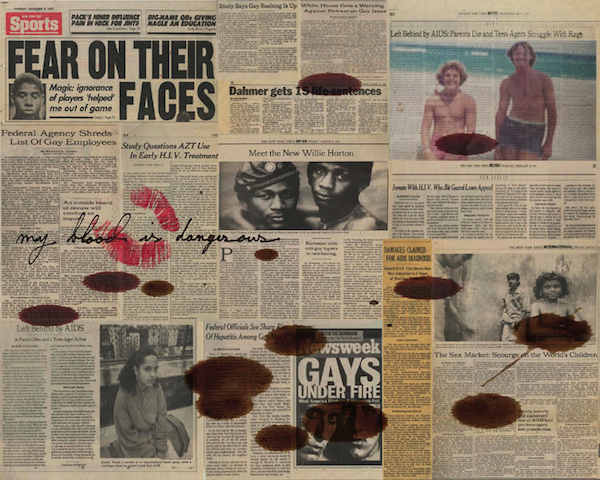
~~~~~~~~~~~~~
In the interest of presenting a full pictures of the CAPP Program, I met with Jennifer Clifford, an alumni of the program, and Brian Sykes, who serves on the advisory board and is a founder of the program.
Marnie Benney: Hi Jennifer. What did you study at UMD and what are your future career interests?
Jennifer Clifford: I have an undergraduate degree in Art History from UMD and I’m interested in curating. I’ve interned at the Boston Museum of Fine Arts, Touchstone Gallery and Hillyer Art Space in D.C. Currently, I’m applying to the Tufts Museum studies program.
MB: I’m curious as to how you think the CAPP program has affected your experience post college?
JC: It provided clarity into the art world. Through it we were exposed to so many learning opportunities. We visited the Smithsonian, and galleries in New York, DC and Baltimore. It’s really a hands on approach to building practical skills that one uses in everyday life.
MB: How did you first find out about the program?
JC: I found out about it my freshman year. UMD does a presentation about campus resources for the incoming Freshman. I applied for the course my senior year.
MB: What is your biggest take away from the program?
JC: My biggest take away was the opportunity to immerse myself in the art world. We research contemporary, east coast artists and their subject matter. And we research a ton. A lot of contemporary artists are addressing issues on society and culture; our goal was to show their thought provoking work to our student body.
MB: What was your favorite experience in the program?
JC: My favorite experience was our studio visit with Jeremy Dean. It was great meeting him and seeing his work space. I arranged the visit through Jeremy’s dealer. It was a great way to learn how to arrange something like this. I also learned about pricing, how to work a commission deal, and communicating expectations.
MB: What is the student body’s response to the work in their common space?
JC: It’s in a location where thousands of students see the work everyday. They love the work, having art on the walls and our exhibitions.

~~~~~~~~~
Marnie Benney: Hi Brian. So you are a founding member of the CAPP program?
Brian Sykes: Yes, I was. I was the graduate coordinator for UMD at the time. When we were conceiving the program, I visited Wake Forest in the fall of 2005. We elected the first class of students in the spring of 2006 to start the program in the fall. The first theory class was taught by Jeffry Cudlin.
MB: How have you seen the program develop over the years?
BS: The collection has become a timeline, so to speak. For instance, when we started the program, there was no twitter and now we have Nate Larson and Marni Shindelman’s work which is totally based around social media.
MB: What are some next steps of the program?
BS: I see our collection growing into a maturity, and having the logistical issues of conservation and maintenance worked out. Hopefully it will develop into a rotating collection.
MB: What do you think the greatest benefit of the program is?
BS: The program does a great job of interjecting contemporary art into a nontraditional environment. It’s taking art to the people. The students involved in the program are growing in an interpersonal way; they take a great deal of personal responsibility in increasing cultural access for the student body. CAPP also helps students develop emotional intelligence and engage with others who may have different interests. These are skills needed in everyday life.

Conclusions:
Financial support within higher education for creative programs like CAPP is uncommon. This unique purchasing program gives students the opportunity to develop crucial real world skills and connections more typically created in apprenticeship programs, not necessarily in traditional academic settings. Through a rigorous process, CAPP student participants learn responsibility, accountability, communication skills, and how to manage group dynamics. Ultimately, the program allows students to make decisions that benefit their peers and enrich the academic environment. It also teaches individuals from a wide spectrum of backgrounds about the value of contemporary art and the significance in the act of purchasing art.
** Featured Image (detail) Jiha Moon. Kudzu, 2012. Ink and acrylic on Hanji paper mounted on canvas. 24″ x 24″
* Author Marnie Benney is an MFA candidate in Maryland Institute College of Art’s Curatorial Practice program–the first program of its kind in the country, and one in which the emphasis is on the execution of relevant, timely, sustainable projects. Previously, she received her BA in Media Studies and Anthropology from Pitzer College. Through her work at The National Geographic Society, OgilvyPR, and Anthropologie, she developed a passion for engaging local and international communities, fostering connections among them, and creating reflective moments through various forms of media. During her time in the Curatorial Practice program she plans to initiate a dialogue among international artists by bringing them to Baltimore, a city with an exciting, bourgeoning art scene and a gritty landscape, providing a window into different worlds expressed through the common language of art.
